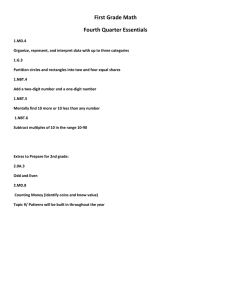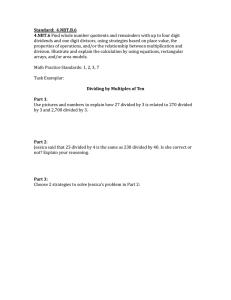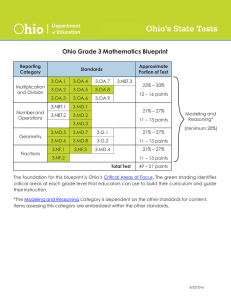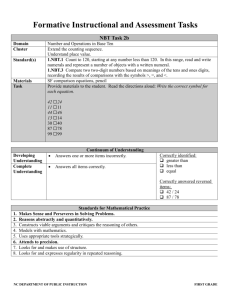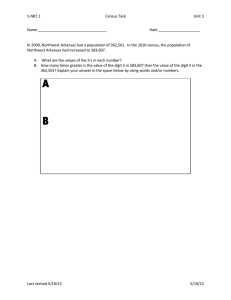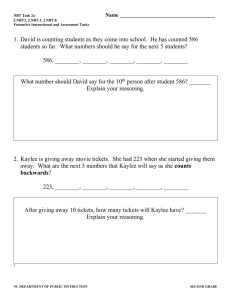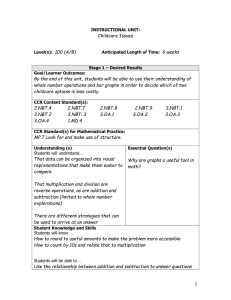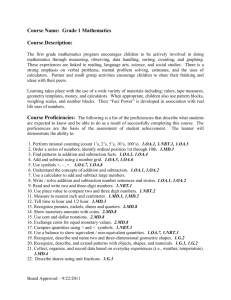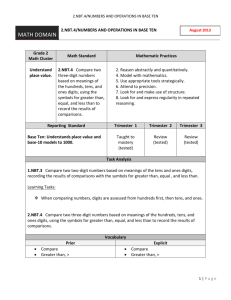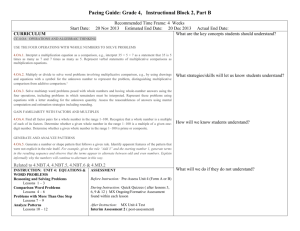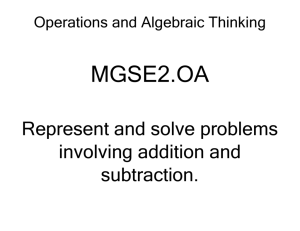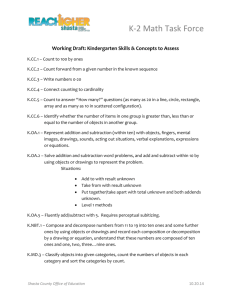Second Grade
advertisement
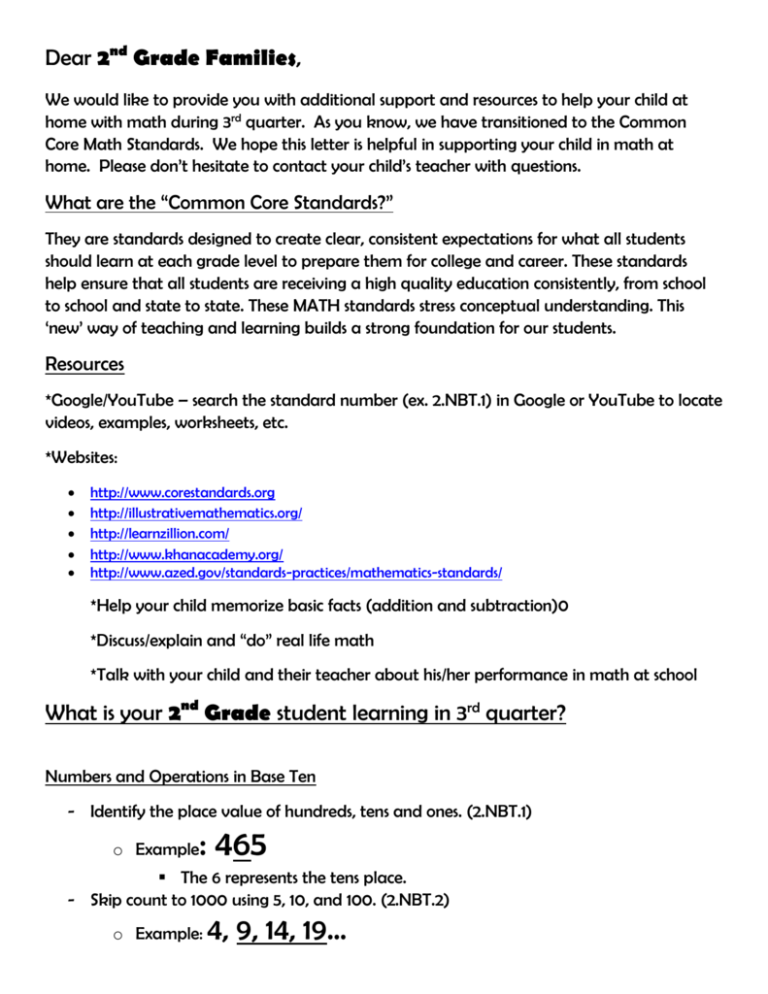
Dear 2nd Grade Families, We would like to provide you with additional support and resources to help your child at home with math during 3rd quarter. As you know, we have transitioned to the Common Core Math Standards. We hope this letter is helpful in supporting your child in math at home. Please don’t hesitate to contact your child’s teacher with questions. What are the “Common Core Standards?” They are standards designed to create clear, consistent expectations for what all students should learn at each grade level to prepare them for college and career. These standards help ensure that all students are receiving a high quality education consistently, from school to school and state to state. These MATH standards stress conceptual understanding. This ‘new’ way of teaching and learning builds a strong foundation for our students. Resources *Google/YouTube – search the standard number (ex. 2.NBT.1) in Google or YouTube to locate videos, examples, worksheets, etc. *Websites: http://www.corestandards.org http://illustrativemathematics.org/ http://learnzillion.com/ http://www.khanacademy.org/ http://www.azed.gov/standards-practices/mathematics-standards/ *Help your child memorize basic facts (addition and subtraction)0 *Discuss/explain and “do” real life math *Talk with your child and their teacher about his/her performance in math at school What is your 2nd Grade student learning in 3rd quarter? Numbers and Operations in Base Ten - Identify the place value of hundreds, tens and ones. (2.NBT.1) : 465 o Example The 6 represents the tens place. - Skip count to 1000 using 5, 10, and 100. (2.NBT.2) o Example: 4, 9, 14, 19… o Example: Locate three digit numbers on a number line. - Read and write numbers to 1000 using number names, expanded form, and using base-ten numbers. (2.NBT.3) o Example: 500+20+4=524; five hundred twenty-four, and draw the block picture - Compare two three digit numbers using greater than, less than and equal signs. (<, >, =) (2.NBT.4) o 435 > 235 - Add and subtract within 1000; using the strategies of place value and operations using addition and subtraction. (2.NBT.5 ) Algorithm is not used until 4th grade. - Mentally add or subtract 10 or 100 from a given number 100 through 900. (2.NBT.8) Operations and Algebraic Thinking - Know at least 80 basic addition facts from memory. (2.OA.2) - Use addition to find the total number of objects arranged in a rectangular array. The array may be up to 5 rows and 5 columns; writing an equation to express the total sum. Measurement and Data - Solve word problems involving length with sums and differences up to 100 by using a number line and write equations with a symbol for the unknown. (2.MD.5 & 2.MD.6) - Tell time and write time from analog and digital clocks to the nearest five minutes, using a.m. and p.m. (2.MD.7) - Solve word problems involving dollar bills, quarters, dimes, nickels, and pennies. (2.MD.8) - Collect data by measuring lengths of several objects; create a line plot to mark the gathered information. (2.MD.9 & 2.MD.10) How many more red jellybeans were collected than blue? - Use interviews, surveys, and observations to collect data and answer questions about students’ interests or their environment. (2.IA.2) Geometry - Partition (divide) a rectangle into rows and columns of the same-size squares and count to find the total number of squares. (2.G.2.) __________
